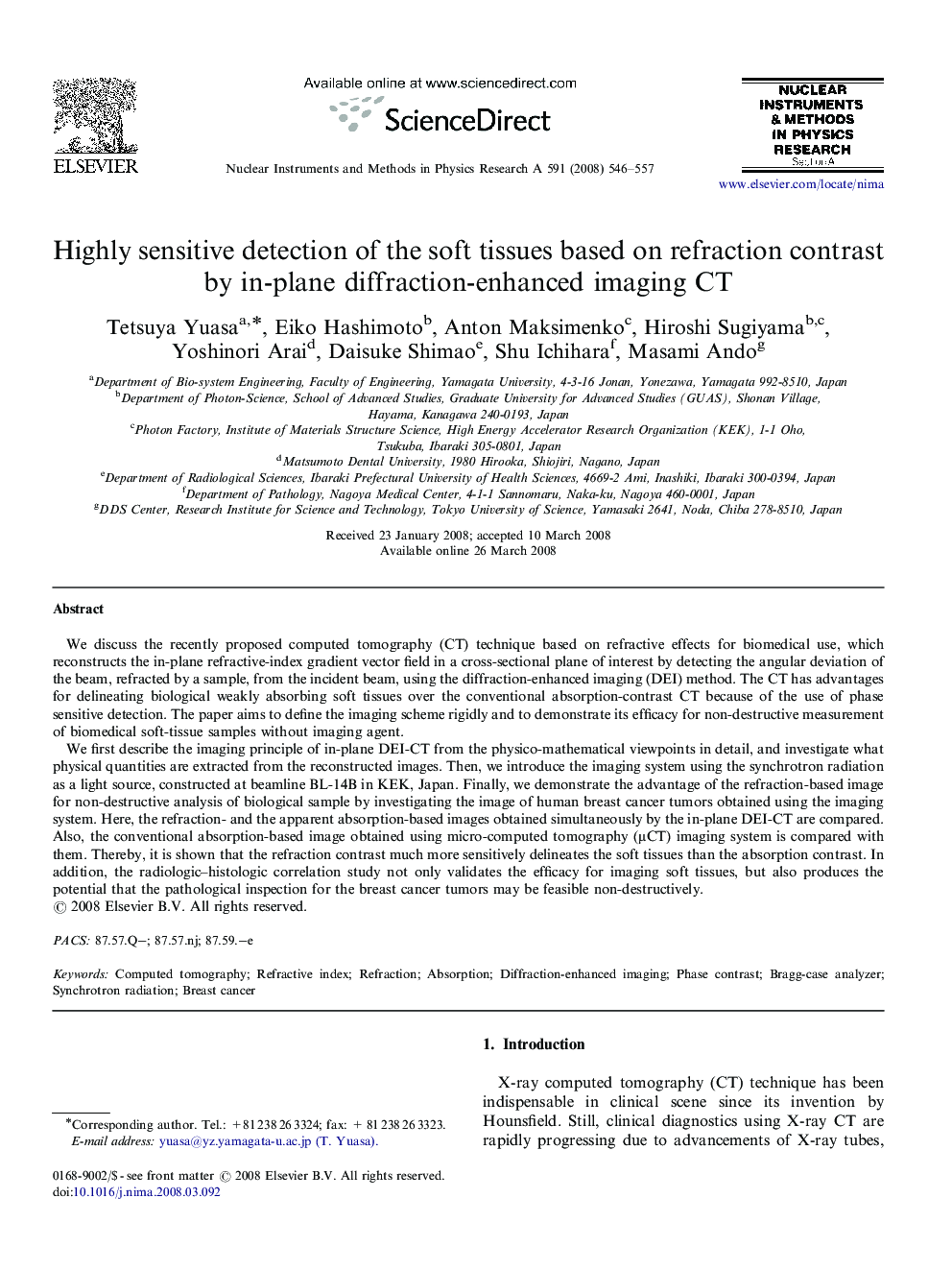| Article ID | Journal | Published Year | Pages | File Type |
|---|---|---|---|---|
| 1829443 | Nuclear Instruments and Methods in Physics Research Section A: Accelerators, Spectrometers, Detectors and Associated Equipment | 2008 | 12 Pages |
We discuss the recently proposed computed tomography (CT) technique based on refractive effects for biomedical use, which reconstructs the in-plane refractive-index gradient vector field in a cross-sectional plane of interest by detecting the angular deviation of the beam, refracted by a sample, from the incident beam, using the diffraction-enhanced imaging (DEI) method. The CT has advantages for delineating biological weakly absorbing soft tissues over the conventional absorption-contrast CT because of the use of phase sensitive detection. The paper aims to define the imaging scheme rigidly and to demonstrate its efficacy for non-destructive measurement of biomedical soft-tissue samples without imaging agent.We first describe the imaging principle of in-plane DEI-CT from the physico-mathematical viewpoints in detail, and investigate what physical quantities are extracted from the reconstructed images. Then, we introduce the imaging system using the synchrotron radiation as a light source, constructed at beamline BL-14B in KEK, Japan. Finally, we demonstrate the advantage of the refraction-based image for non-destructive analysis of biological sample by investigating the image of human breast cancer tumors obtained using the imaging system. Here, the refraction- and the apparent absorption-based images obtained simultaneously by the in-plane DEI-CT are compared. Also, the conventional absorption-based image obtained using micro-computed tomography (μCT) imaging system is compared with them. Thereby, it is shown that the refraction contrast much more sensitively delineates the soft tissues than the absorption contrast. In addition, the radiologic–histologic correlation study not only validates the efficacy for imaging soft tissues, but also produces the potential that the pathological inspection for the breast cancer tumors may be feasible non-destructively.
